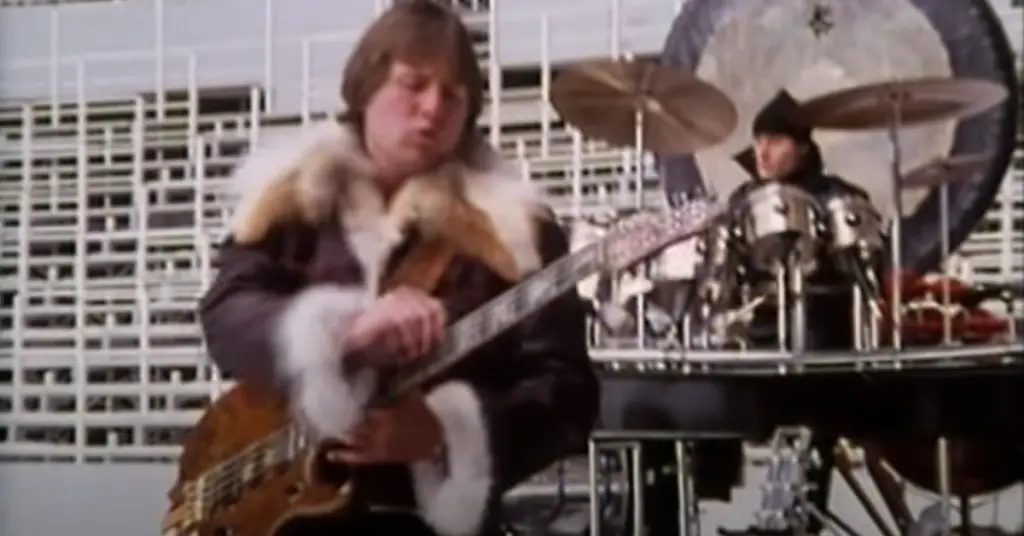In the hands of most bands, adapting a classical piece might feel like a gimmick. But for Emerson, Lake & Palmer, it was a calling. With their bombastic, boundary-shattering take on Aaron Copland’s “Fanfare for the Common Man,” ELP bridged the gap between high art and hard rock, turning a patriotic orchestral composition into a towering rock anthem fit for stadiums, headphones, and history books alike.
Released in 1977, their version wasn’t just a nod to the past—it was a statement of purpose: classical grandeur, synthesized fury, and rhythmic might, all colliding in real time.
The Original Roots: American Spirit in Brass
First, a bit of background. Aaron Copland composed “Fanfare for the Common Man” in 1942 as a tribute to everyday Americans during World War II. Written for brass and percussion, it was solemn, stately, and deeply moving—an aural salute to dignity, sacrifice, and quiet strength.

Fast forward to the mid-1970s, and Keith Emerson, Greg Lake, and Carl Palmer—the British progressive rock power trio known for fusing classical, jazz, and rock—decided to reinterpret it for a new era. And they didn’t just cover it. They reinvented it, expanding it into a nine-minute odyssey of layered synthesizers, pounding drums, and arena-shaking energy.
The Sound: Synth Majesty Meets Rhythmic Muscle
ELP’s version of “Fanfare for the Common Man” begins much like the original—grand and spacious, the main theme delivered with regal authority on a Moog synthesizer. But then something happens: the groove kicks in.
With Carl Palmer’s drums thundering and Greg Lake’s bass providing a driving pulse, the piece morphs into a rock symphony. It’s Copland by way of Led Zeppelin—familiar, yet transformed. The band stretches the theme out, riffing and jamming on it like a jazz trio playing with a national anthem.
Keith Emerson’s keyboard work is particularly stunning. He plays the fanfare theme with reverence, then explodes into flurries of synth runs, organ solos, and Moog wizardry, injecting wild, cosmic energy into the solemn original.
What results is nothing short of majestic rock theatre—a blend of discipline and chaos, form and fire.
A Surprising Hit
Though instrumental and unusually long, “Fanfare for the Common Man” became an unexpected chart success, reaching #2 on the UK Singles Chart—an almost unheard-of feat for a progressive rock track with no vocals.
The song also served as a major single from the band’s 1977 album Works Volume 1, a double LP that showcased their penchant for orchestral arrangements and grand ambition.
The success of “Fanfare” proved that audiences were open to bold, genre-defying ideas—and that ELP’s fusion of classical sophistication and rock power had true mass appeal.
Stage Spectacle and Cultural Impact
Live, the track became a centerpiece of ELP’s stage shows, often featuring Emerson’s rotating keyboard rigs, pyrotechnics, and drum solos that pushed the performance into near-operatic territory. It wasn’t just music—it was performance art, delivered at 110 decibels.
Over time, their version has become the definitive rock adaptation of Copland’s classic, played at sports arenas, ceremonies, and even Olympic broadcasts. It remains a go-to for moments that demand awe and reverence with muscle and motion.
Final Thoughts
With “Fanfare for the Common Man,” Emerson, Lake & Palmer didn’t just cover a piece of classical music—they breathed fire into it. They honored Copland’s theme of dignity and democratic spirit while injecting it with the full force of ‘70s progressive rock excess and brilliance.
It’s a track that reminds us of the power of fusion, of how art can evolve across time, across borders, and across genres—and still move us to our core.
So if you’ve never heard a Moog synthesizer channeling the soul of American resilience,
press play.
And prepare to be thunderstruck.


Facebook Comments